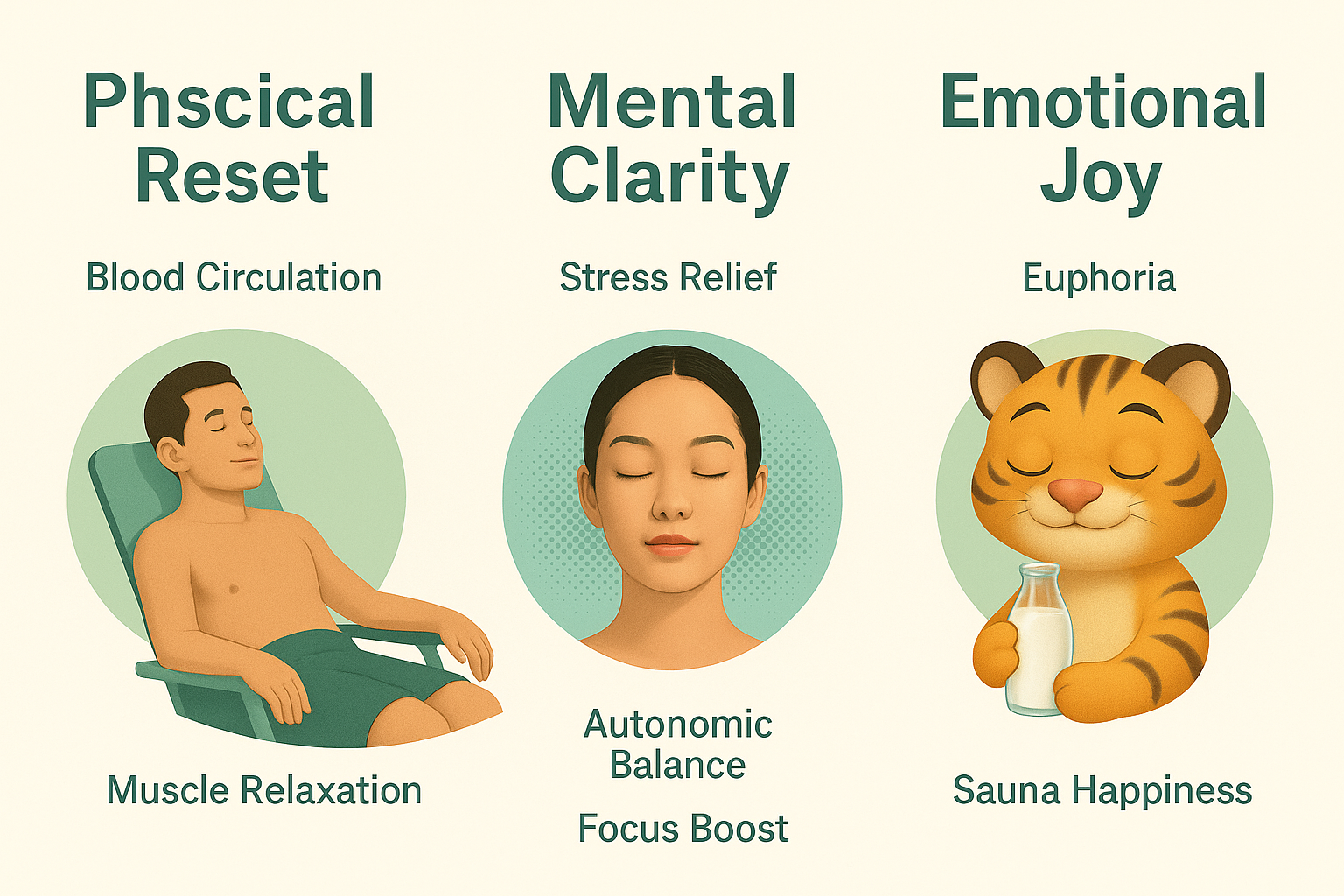Index
🌀 Totonou: The Word with No Exact Translation
In Japanese sauna culture, one mysterious word often stands out: “totonou ‘ととのう’ “.
It has no direct English equivalent.
Loosely, it means “to be aligned”, “to feel in balance”, or “to reach a perfect inner state”.
But it’s more than just physical relaxation—it’s a full-body reset.
Sauna lovers describe it as a “mind-body high”, a peaceful state where everything feels right.
It’s not something you simply do—it’s something you feel.
🧖 The Physical Process Behind Totonou
So, how do people totonou?
It usually follows a three-step ritual:
- 🔥 Heat Up: Sit in a sauna “typically 80–100°C” for 6–12 minutes
- ❄️ Cool Down: Dip into a mizuburo “cold bath” around 15–17°C for 1–2 minutes
- 🌬 Rest: Sit or lie down in a quiet space, preferably outdoors, for 5–10 minutes
Repeat this cycle 2–3 times.
During this routine, your body experiences a dramatic contrast between extreme heat and cold, followed by peaceful stillness.
This rhythmic stimulation triggers a balance in your autonomic nervous system, often resulting in a state of euphoria.
🌿 Mindfulness & Euphoria: Why It Feels So Good
What makes totonou so addictive?
Here’s the science “and magic” behind it:
- Endorphins & dopamine surge during the cool-down phase
- Your heart rate slows, muscles relax, and your mind clears
- Some people describe it as “post-orgasmic clarity” or “floating in space“
It’s like meditation, but intensified by physical contrast.
In fact, many Japanese sauna-goers close their eyes and feel time slow down during totonou.
Some even say it’s more effective than therapy.
🍛 Sauna Meals: The Joy After the Heat
After a deep sauna session, Japanese people love to indulge in “sauna meshi ‘サウナ飯’ “—meals that taste extra amazing post-sweat.
Popular options include:
- 🥛 Bottled milk: A classic sento drink, rich and refreshing
- 🍛 Curry rice: Hearty and satisfying, especially at spa-style saunas
- 🍜 Chilled ramen or recovery meals like miso soup and rice bowls
- 🧃 Sports drinks & jelly pouches: For electrolyte balance
There’s even a saying: “What you eat after sauna is part of the experience.“
🌏 Why It Fascinates Foreigners
Foreign visitors often react with surprise “and delight”:
“Why do people willingly plunge into freezing water!?”
“You go into a trance just by sweating and sitting!?”
“Is this what nirvana feels like?”
But that’s exactly the charm.
Japan has turned sauna into a cultural ritual—blending physical, emotional, and even spiritual aspects.
It’s not just detox. It’s a lifestyle.
Whether you’re a sauna pro or a first-timer, experiencing totonou in Japan is something you’ll never forget.
P.S.
Recently, I have been using saunas to reset my brain and recover from fatigue as a way to improve my blog and my daily worries. I’ve always loved saunas, so this is a blessing. As I’ll write about in the next Part, there are a wide variety of saunas in Japan, so I’d like to go to a few.
またね “Matane”!


コメント